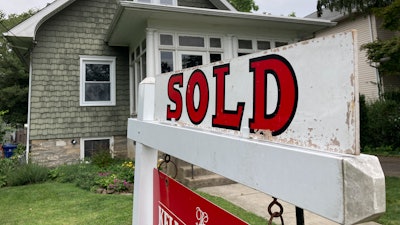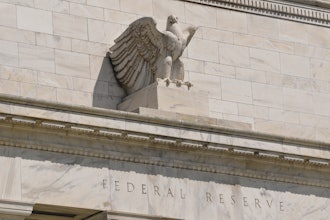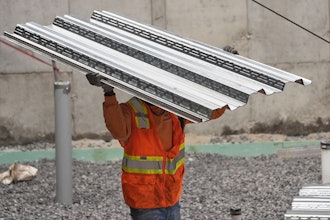
LOS ANGELES (AP) — The housing market's comedown from its high-flying days early this year is deepening, with home sales in July falling for the sixth straight month.
Sharply higher mortgage rates, surging inflation and prices that remain near all-time highs are making homes less affordable. Sales fell 20.2% from July last year, reaching the slowest pace since May 2020, near the start of the pandemic.
But the slowdown has begun to tip the homebuying equation, if ever so slightly, in favor of house hunters who can afford to stay in the market and away from sellers, who'd previously been able to offload their homes at prices they may have never dreamed of.
Homes are still selling lightning fast, on average, and many continue to fetch multiple offers. But many sellers have had to become more flexible on their asking price and find they no longer can demand would-be buyers waive important safeguards like a home inspection before closing the deal.
The shift doesn't mean it's a buyer's market now — it'll take a sharp increase in the number of homes on the market before that happens. Still, it is a notable reversal after a housing shortage, rock-bottom mortgage rates and soaring home prices skewed the housing market strongly in sellers' favor in recent years.
“We know that homes are taking longer to sell, sellers are having to price more carefully and are having to adjust if they’re not priced competitively,” said Danielle Hale, chief economist for Realtor.com. “So, it's moving in a buyer-friendly direction, but I'm not sure it’s quite there yet."
New data show somewhat of a mixed picture of the housing market, with sales continuing to decline while the tight inventory of properties for sale keep prices climbing.
The National Association of Realtors said Thursday that existing home sales fell 5.9% last month from June to a seasonally adjusted annual rate of 4.81 million. Excluding the pandemic slowdown, sales in July were running at the slowest pace since November 2015, NAR said. The last six-month losing streak happened between August 2013 and January 2014.
Despite the softer market, many sellers are still entertaining several offers. A typical home received 2.8 offers last month, though that’s down from 4.5 offers a year earlier, NAR said.
Nicholas Brooks and Nathan Giddings put their four-bedroom, 2.5-bath house in Flower Mound, Texas, roughly 20 miles northwest of Dallas, on the market in early June for $575,000 and got several offers. They ended up accepting a $645,000 bid, but it fell apart soon after. The couple, which now live in Portland, Maine, relisted the house a few weeks later, but ended up accepting a $615,000 offer.
“We started super-optimistic, we got a ton of offers over asking and then clearly a month later it was a couple of offers and much less,” said Brooks, a systems analyst. “We definitely thought if we left it on the market the offers would get lower and lower.”
Even as the housing market is losing steam, home prices have continued to rise sharply. The national median home price jumped 10.8% in July from a year earlier to $403,800. But earlier in the year, prices were climbing annually by around 20%.
Before the pandemic, the median home price was rising about 5% a year, said Lawrence Yun, NAR’s chief economist.
“So, it’s still rising quite strongly, even though it is moderating from a super-heated pace,” he said.
At the start of the year, when the real estate market was still red hot, competition fueled bidding wars that often resulted in homes selling within days of going on sale and for well above their listing price. As the market has cooled, however, the difference between the price homes are listed for and what they end up fetching has narrowed nationally.
In January, the median U.S. home sale price was 14.4% below the median listing price, but by May the difference increased to 19.5%, according to an analysis by Realtor.com. Even in a red-hot market, on a national basis, homes typically sell at below asking price.
Data suggest some metropolitan areas where homes on average were selling above the asking price have reversed entirely and are no longer sellers’ markets as buyers have regained more leverage to negotiate a more favorable price.
For example, in the Memphis metropolitan area the median home sale price in January was 11.1% higher than the median listing price. That flipped by May, with the median sale price ending up 11.4% lower than the median listing price, according to Realtor.com.
The trend isn't confined to one particular region. Among those locations less favorable for sellers are metro areas around Honolulu, Miami, Detroit, Milwaukee and Little Rock, Arkansas.
Another sign that the market has turned more favorably for buyers: A surge in the share of property listings that have had their price reduced. In January, before mortgage rates began their sharp climb, only 6.4% of U.S. homes listed for sale had their asking price reduced, according to Realtor.com. That increased steadily as the year went on, reaching 19.1% by July.
“Sellers are having to drop their price to more realistic terms or kind of a little bit under where they want it to be,” said Jessie Rittenhouse, an agent with Century 21 in the Dallas-Fort Worth metro area.
In addition, sellers are sometimes offering to pay buyers' closing costs or to give them thousands of dollars to offset the impact of higher mortgage rates, Rittenhouse said.
Still, competition for the most affordable homes remains tight, even as demand overall has cooled.
An analysis of home sales by Zillow shows that sellers with homes priced in the lowest third of the market are reducing their asking price less frequently than those selling homes in the middle and upper end of the market.
That holds true in the most-expensive markets, such as Los Angeles, New York and Seattle, as well as in more affordable markets such as Atlanta, Kansas City and Tampa, the real estate data company found.
For first-time buyers and others looking at properties on the lower end of the price spectrum, that means their homeownership prospects aren't necessarily improving.
“Affordability has plunged to the lowest level in 30 years,” said Yun at the NAR. “That’s why home sales are coming down.”






















